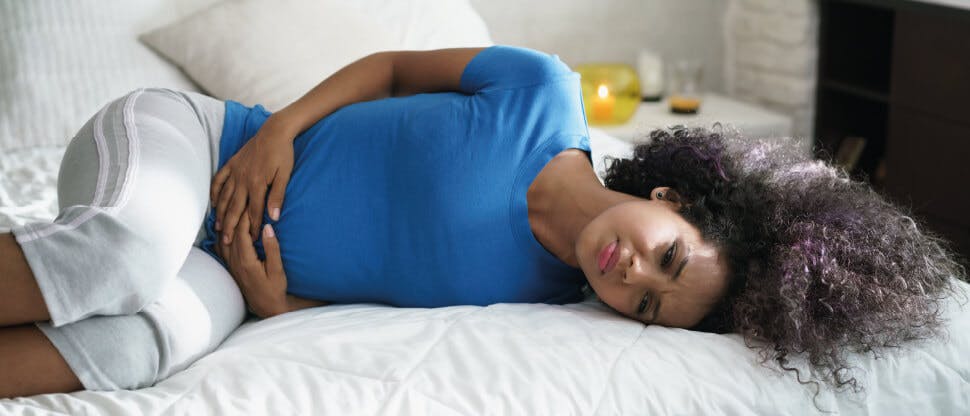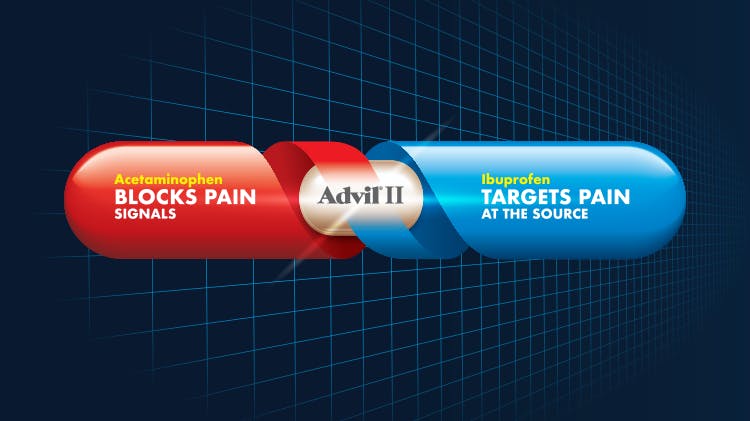Menstrual Pain Management

Menstrual Pain Management
Menstrual cramps, or primary dysmenorrhea, are a common symptom of menstruation. Primary dysmenorrhea includes cramping in the lower abdomen just before or during menstruation, separate from other diseases of the reproductive system like endometriosis.1 Among your patients, you may notice frequent reports of dysmenorrhea; in fact, the prevalence of primary dysmenorrhea is as high as 90 percent.1
Primary dysmenorrhea is underdiagnosed and undertreated, is a recurrent cause for absenteeism, and negatively impacts quality of life in women.2 It is such a common problem for those who menstruate that it is often underreported during medical interviews, despite patients’ need to restrict activities. Therefore, it is important to consider your patient’s pain tolerance and to listen to their concerns.
Dysmenorrhea affects women of all ages and races and is one of the most common causes of pelvic pain in general.2 It may begin during adolescence within three years of menarche, or the first menstrual period.1
How to Diagnose Dysmenorrhea
You may diagnose primary dysmenorrhea through the following methods:2
- Review of the patient’s medical history
- Physical examination, including a pelvic exam to check for abnormalities or signs of infection
- Laparoscopy if no known etiology after noninvasive evaluation is complete
If you suspect the patient has secondary dysmenorrhea, consider the following methods of diagnosis:2
- Transvaginal ultrasonography to detect endometriomas of the bowels or ovaries
- Urinary human chorionic gonadotropic pregnancy test
- Vaginal and endocervical swabs
- Complete blood count
- Urinalysis
- Cervival cytology
- Magnetic resonance imaging if other findings are inconclusive
Treating Primary Dysmenorrhea
There are a number options for dysmenorrhea treatment. Consider the following treatments for your patient’s severe menstrual pain:3
- NSAID pain relievers such as ibuprofen or naproxen sodium. Patients can begin taking NSAIDs when pain from their menstrual period begins and continue for 2-3 days or until the pain is gone.
- Hormonal birth control—such as the pill, the patch, the shot, an implant, an intrauterine device, or a flexible ring inserted into the vagina—is a secondary line of treatment that prevents ovulation and can reduce the severity of menstrual cramps. Some patients may not want to take this route due to the necessity of using the hormones every day, versus using an NSAID for only a few days a month
- Surgery may be necessary due to causes of secondary dysmenorrhea such as endometriosis or fibroids
In addition to these medical options, there are also lifestyle and home remedies that can treat menstrual pain. Suggest your patient try the following:3
- Get regular exercise, which may relieve cramps
- Use heat, such as a heating pad, hot water bottle, or a hot bath, which may reduce menstrual pain
- Supplement with vitamin E, omega-3 fatty acids, vitamin B-1, vitamin B-6 and magnesium, which may relieve dysmenorrhea
- Reduce stress, which may reduce menstrual pain

Nonpharmacologic methods for treating menstrual cramps.4-6
Many forms of exercise can help mediate menstrual cramp pain. Walking, running, bike riding, swimming—anything aerobic that gets a patient’s heart rate up.
Wellness routines that include breathing exercises, limiting fats, sugars, caffeine, and alcohol, as well as getting plenty of rest are all ways to reduce pain associated with menstrual cramps.

Exercise and wellness routines may not be enough4-6
For patients who find their menstrual cramp pain undiminished by exercise, medication and supplements may help.
Ensuring proper intake of vitamins, like calcium, magnesium, and vitamin E, or use of a hormonal birth control are also proven methods for helping with menstrual cramp pain.
The number one recommendation for dealing with menstrual cramp pain is to take a trusted OTC painkiller, like Advil® DUAL ACTION
Although further studies are required to determine the efficacy of them, alternative medicine options for treating dysmenorrhea include:3
- Acupuncture with extremely thin needles along strategic points on the body may relieve menstrual pain
- Transcutaneous electrical nerve stimulation, or TENS, may stimulate the release of endorphins, the body’s natural painkillers
- Herbal medicine, including pycnogenol, fennel, or a combination, may relieve menstrual pain
- Acupressure, like acupuncture, targets certain points along the body with gentle pressure on the skin instead of with needles, and it may relieve menstrual pain
While all of these treatment options are available, work with your patient on a treatment plan for their dysmenorrhea, and cater the plan to their specific needs. Explore further information about pain relief, and encourage your patient to explore our patient resources for additional helpful resources.
Learn more

What is dysmenorrhea?
Your guide to understanding dysmenorrhea (menstrual pain) at a high level overview.
Products
Find out how our class-leading treatments can help your patients manage their everyday pain.
Join the Pain -Relief Community

A duo of MOAs that fight pain together
Ibuprofen and acetaminophen work together to help target pain directly, while blocking pain signals.
Learn more
Advil® DUAL ACTION Frequently Asked Questions
A resource to help answer common questions about Advil® DUAL ACTION.